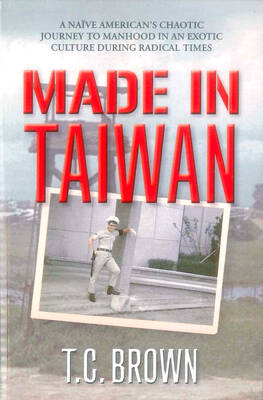Maureen Stapleton, who created a gallery of pugnacious, sometimes profane but always vulnerable heroines on Broadway, in films and on television and who won an Academy Award for her fiery performance as the anarchist Emma Goldman in Reds, died on Monday at her home in Lenox, Mass. She was 80.
The cause was chronic pulmonary disease, said her son, Daniel Allentuck.
Stapleton had one of the most honored acting careers of her generation. Her Academy Award for Reds, Warren Beatty's 1981 epic about the Russian Revolution, came on her fourth Oscar nomination. She also won two Tony Awards and an Emmy among many nominations.

Stapleton's story embodied the classic theatrical cliche. A small-town girl nurtured on long afternoons at the movies, she came to New York in 1943 with dreams of becoming a star in the theater. She worked at a variety of jobs salesgirl, hotel clerk, artists' model while attending acting school. Then, not long after her theatrical baptism in summer stock and a few small roles on Broadway, fortune smiled.
It was 1950. Tennessee Williams had written a play called The Rose Tattoo, and he wanted the renowned Italian actress Anna Magnani to play the lead role, that of Serafina Delle Rose, an earthy Sicilian-American widow looking for love. But Magnani declined, fearing that her English was inadequate for Broadway. Other actresses were auditioned, without success. Harold Clurman, who had directed Stapleton earlier that year in Arthur Laurents' Bird Cage, suggested to the producers that they audition her. After repeated callbacks, she was told she had the part.
The Rose Tattoo opened at the Martin Beck Theater in February 1951. Brooks Atkinson, writing in The New York Times, called the performance "triumphant" and praised her ability to convey not only the coarseness of the plainspoken Serafina but also her moments of exaltation. The play ran for 300 performances then toured for six months.
The Rose Tattoo fulfilled Stapleton's childhood dream of becoming a star and also earned her a Tony Award. But the stress of her first major role also brought her face to face with the demons that would pursue her throughout her career. She began to drink, though she always maintained that she drank only after a performance. (She routinely vomited before curtain time.) She also became convinced that someday, someone in the audience was going to kill her.
Stapleton's growing paranoia led her to seek out a psychotherapist after the show ended its tour, but a cure for her ills she also had a lifelong fear of elevators and airplanes proved elusive. One therapist was to treat her for 14 years. Despite her problems with alcohol and bouts of anxiety, her life seemed to be on a positive track. She married Max Allentuck, general manager for the producer Kermit Bloomgarden. They had a son, Daniel, and a daughter, Katherine. When word came that Williams was ready with a new play, Orpheus Descending, she was told once again that he wanted Magnani to play the heroine, a frustrated Italian-American storekeeper in a small Southern town whose world is torn apart by the arrival of a handsome newcomer. But Magnani declined again, and the role went to Stapleton.
The play opened on Broadway in March 1957 and drew mixed reviews, but Stapleton won raves in the lead role of Lady Torrance, Williams's gritty, sex-starved heroine.
Then Hollywood beckoned, and in her very first film, an adaptation of Nathaniel West's Miss Lonelyhearts (1959), she was nominated for an Academy Award for best supporting actress, playing a deceitful man-eater. In 1959, she and Allentuck were divorced, and she began a relationship with the playwright David Rayfiel, whom she eventually married. But guilt and anxiety over her divorce, she said, drove her further into alcoholism and indulgence. Her weight ballooned. Liquor, like theatrical makeup, was a fixture in her dressing room.
Once established on Broadway and in films and television, she was rarely idle. She appeared on Broadway with Jason Robards in Lillian Hellman's Toys in the Attic in 1960 and in the film version of Orpheus, retitled The Fugitive Kind. Williams got his wish, however, and Anna Magnani played Lady Torrance onscreen while Stapleton had to settle for a lesser role. Stapleton had an earlier disappointment when Magnani won an Academy Award for best actress as the earthy Serafina in the 1955 film version of The Rose Tattoo.
By this time, she was married again, to Rayfiel, but her drinking was out of control. She was hospitalized for detoxification, after which she voluntarily entered a psychiatric facility. Her second marriage lasted three years. A few months after her divorce, she returned to the role that had made her a star, appearing as Serafina opposite Harry Guardino in a revival of The Rose Tattoo at the City Center.
In 1967, she won an Emmy for her television work in Among the Paths to Eden, an adaptation of a Truman Capote story about a spinster and a widower.
A year later, she was cast opposite George Scott in Neil Simon's comedy Plaza Suite, staged by Mike Nichols. She and Scott played three different warring couples to hilarious effect, and her performance won her another Tony nomination. The awards and nominations kept coming. She was nominated for an Oscar as best supporting actress for Airport (1970); she won a best-actress Tony that same year for her portrayal of an alcoholic down-and-out singer in Simon's laughing-through-tears drama The Gingerbread Lady she and her co-star, Charles Durning, received Emmy nominations for Queen of the Stardust Ballroom (1975), in which they played a couple who warm to romance when they meet at a dance hall.
Another Oscar nomination, for supporting actress, followed her work in Woody Allen's 1978 drama, Interiors. In 1981, she was nominated for a Tony for The Little Foxes, in which she played the battered Aunt Birdie opposite Elizabeth Taylor in the lead role, Regina. It turned out to be her last appearance on Broadway.
But her movie career continued, perhaps most memorably as the revolutionary Goldman in Reds. The performance won her the Oscar for best supporting actress. Her film credits also included Cocoon (1985) and its sequel, in which she plays one of a group of Florida retirees rejuvenated by extraterrestrials, and Nuts (1987), in which she plays the mother of a high-priced call girl (Barbra Streisand).
When her grandchildren were born, Stapleton moved to Lenox to be near family members and continued to accept the occasional role, playing a woman dying of ovarian cancer in the television drama Last Wish(1992) and appearing opposite Armin Mueller-Stahl in the 1994 film The Last Good Time.
She also wrote her autobiography, A Hell of a Life, with Jane Scovell in 1995, in which she looked back on a life in the theater with a few regrets but a lot of satisfaction.

By 1971, heroin and opium use among US troops fighting in Vietnam had reached epidemic proportions, with 42 percent of American servicemen saying they’d tried opioids at least once and around 20 percent claiming some level of addiction, according to the US Department of Defense. Though heroin use by US troops has been little discussed in the context of Taiwan, these and other drugs — produced in part by rogue Chinese Nationalist Party (KMT) armies then in Thailand and Myanmar — also spread to US military bases on the island, where soldiers were often stoned or high. American military policeman

Under pressure, President William Lai (賴清德) has enacted his first cabinet reshuffle. Whether it will be enough to staunch the bleeding remains to be seen. Cabinet members in the Executive Yuan almost always end up as sacrificial lambs, especially those appointed early in a president’s term. When presidents are under pressure, the cabinet is reshuffled. This is not unique to any party or president; this is the custom. This is the case in many democracies, especially parliamentary ones. In Taiwan, constitutionally the president presides over the heads of the five branches of government, each of which is confusingly translated as “president”

An attempt to promote friendship between Japan and countries in Africa has transformed into a xenophobic row about migration after inaccurate media reports suggested the scheme would lead to a “flood of immigrants.” The controversy erupted after the Japan International Cooperation Agency, or JICA, said this month it had designated four Japanese cities as “Africa hometowns” for partner countries in Africa: Mozambique, Nigeria, Ghana and Tanzania. The program, announced at the end of an international conference on African development in Yokohama, will involve personnel exchanges and events to foster closer ties between the four regional Japanese cities — Imabari, Kisarazu, Sanjo and

Sept. 1 to Sept. 7 In 1899, Kozaburo Hirai became the first documented Japanese to wed a Taiwanese under colonial rule. The soldier was partly motivated by the government’s policy of assimilating the Taiwanese population through intermarriage. While his friends and family disapproved and even mocked him, the marriage endured. By 1930, when his story appeared in Tales of Virtuous Deeds in Taiwan, Hirai had settled in his wife’s rural Changhua hometown, farming the land and integrating into local society. Similarly, Aiko Fujii, who married into the prominent Wufeng Lin Family (霧峰林家) in 1927, quickly learned Hoklo (commonly known as Taiwanese) and